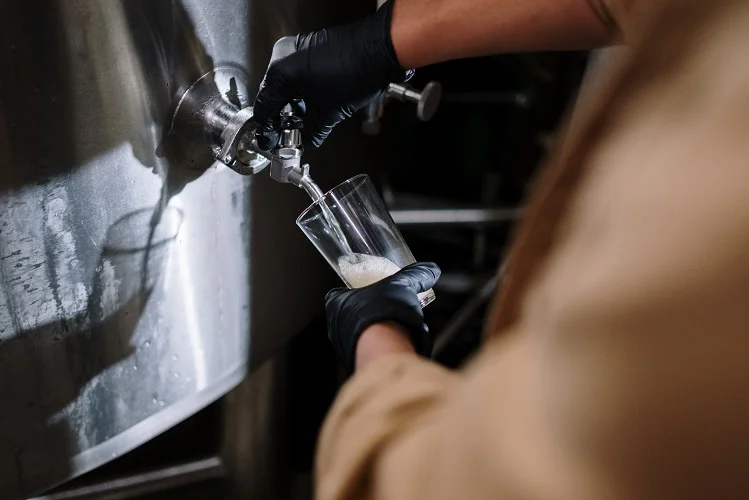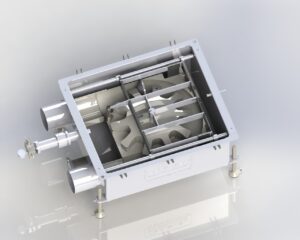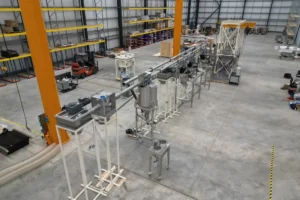Discovering the secrets of how to brew beer better has become an essential goal for small breweries. Since its inception in the 1980s in the US, the craft beer industry has been on a steep incline. Before this, a handful of beer-producing giants overpowered the market, but today, the scene is quite different – 40% of the global beer industry revenue comes from smaller breweries, and they’re taking more and more of their share with each upcoming year. So, to stay on top of the craft beer industry, implementing modern technology and innovative methods is crucial.
Craft Beer Revolution – Embracing New Flavors and Experiences in the Brewing Industry
Beer lovers, as well as the general public, are thrilled with craft beers. Commercialized beer offers barely any variation in flavor, with most focusing on churning out batch after batch of the same pale ale we’ve seen many times over. And there’s nothing wrong with that – everyone loves a good lager. However, the uniqueness and the thrill of craft beer are undeniable. Beer consumers are turning towards new tastes and new feelings those tastes bring, and we couldn’t be more excited about it.
Elevate the Brewing Experience With Expert Advice
If you’re home brewing or a proud owner of a brewery of any size, you know the value it holds in the local community – perhaps even beyond that. You’re offering your customers a refreshing, delicious beverage and an opportunity to spend time with their friends and family, unwind after a long, hard day, or celebrate their hard-won achievements. A good beer is an experience more than anything else.
To stay on top of your brewing game and not let your community down, you want to invest more in your brewing process. You are looking for ways to improve your beer recipes, upgrade your equipment with a custom conveyor belt for food, and, ultimately, brew great beer. Hopefully, this complete guide to beer brewing will help you get there.
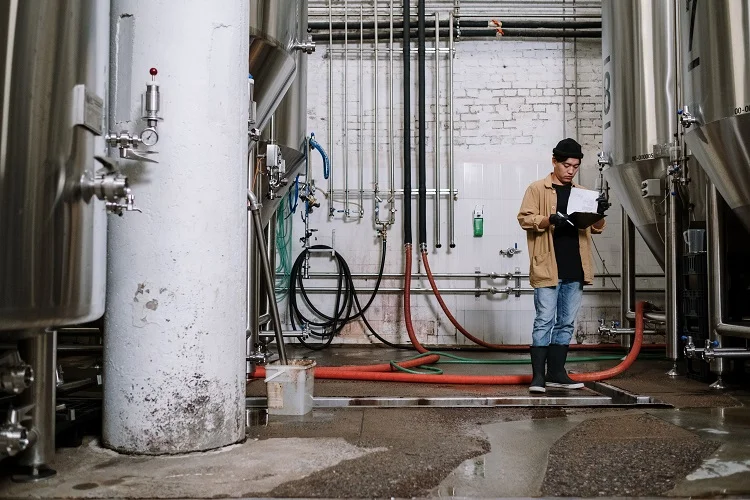
History of Beer
The significance of beer for humanity is indisputable, and the history of beer goes back a long way. Beer was discovered several thousand years ago in what is today Iran. The first beer-like liquids were likely produced accidentally, thanks to wild yeast. Its popularity grew quickly. Chinese villagers, the residents of ancient Egypt and Mesopotamia, Egyptian pharaohs, African and Sumerian tribes, and ancient Romans – everyone flocked around beer, developing various types of brewing methods.
In the Middle Ages, beer began taking the shape of what we drink today. European monasteries are credited with inventions in the beer brewing process. These include adding hops for preservation and a bitter, mouth-watering taste, along with lagering to produce the pale lagers that are so popular, including India pale ales.
In the United States, Prohibition effectively held back the beer industry for decades. However, when those laws loosened up, it was only a matter of time before breweries started springing up all over the country. In 2020, more microbreweries are in operation than there were before Prohibition, which is a significant accomplishment.

How to Brew Beer Better? Install Modern Brewing Equipment
Although there are several types of brewing, the main beer brewing process and fermenting process didn’t change much from the foundation laid by the ancient civilizations. The basics are the same – use a starch grain as a source of carbohydrates to convert them into alcohol through the extraordinary power of yeast.
The main ingredients are the same as well – water, barley, different hop varieties, and yeast. It is only the equipment that has advanced dramatically since the early ages of beer, making the entire process simpler, faster, and easier on the brewers and their workers.
What Does This Equipment Look Like?
When you walk into an average brewery, you will find spotless, stainless steel equipment – grinders or grain mills, full or partial mash tuns, lauter tuns, all the way to the packaging machines. The cleaning and sanitizing procedures have been fine-tuned to perfection, seeing how beer falls under strict purity regulations.
One of the main features of brewing equipment is that it is almost entirely automated. The introduction of automation was a revolutionary moment in the recent beer brewing history for multiple reasons – it sped up the brewing process, reduced the number of workers required for physically strenuous tasks, reduced the risk of accidents and workplace injuries, increased efficiency, and improved the consistency of the product.
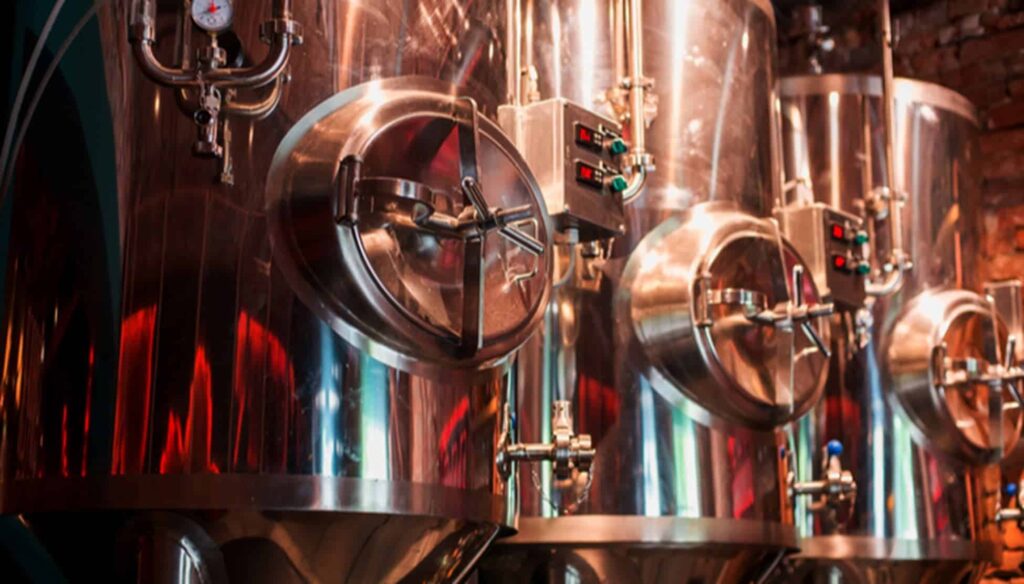
Why You Should Install Automation Conveyor Systems
If some of the steps in your brewing process are not yet automated, you should consider making them so. For example, if workers are transporting grain from the mill into the mash tun by hand or heavy machinery, you might want to look into conveyor systems. Setting up the appropriate conveyor system will remove the human factor from transporting grain, such as malted barley or wheat. Your workers won’t have to repeat the same motions over and over again, and their health won’t suffer.
Tubular drag cable and disc conveyors, such as those that Cablevey Conveyors offers, have proven to be game-changing in a brewery. They gently transport the grain, with little to no breakage, preserving the integrity of your grain arriving at the mill and through to the mash tun. The key to better and modern beer brewing is higher efficiency, consistent quality, and minimal risk for the workers.
How Our Industrial Conveyor Belt System Can Improve Your Efficiency
Cablevey systems, in particular, are exceptional in handling long runs in tight spaces. Industrial space is expensive, and breweries don’t often have the luxury of setting up conveyors exactly like they’d want them. Cablevey goes above and beyond to ensure customized, seamless transport of your grain in tight corners. Cablevey offers component parts in a variety of sizes, tube diameters, and materials, as well as a multitude of options when it comes to inlets and cleaning and transfer systems.
Additionally, Cablevey’s bulk material handling equipment is extremely reliable – your brewery won’t have to pause production even if your systems are running 24 hours a day, five days a week. Compared to other types of conveyors, Cablevey will meet your brewery’s needs head-on and deliver a transport solution that is custom engineered to fit your production facilities.
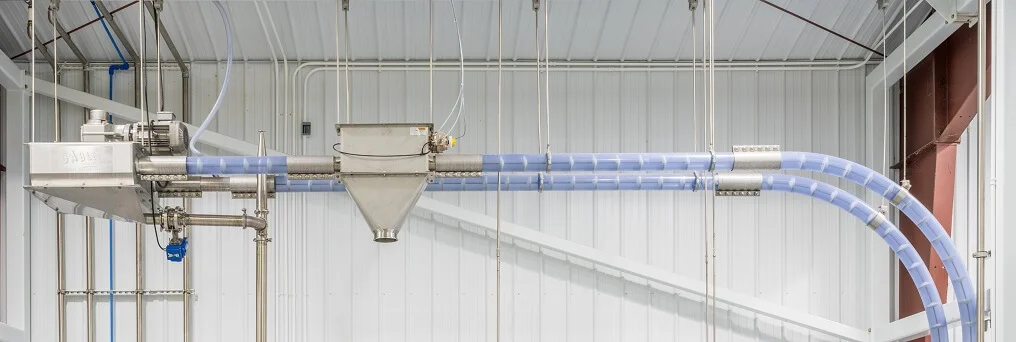
Technology Innovations
Aside from automation, there are more than a few companies continually working on new brewing technologies. Through different expos and conferences, these technologies are presented to the craft brewing industry, and a lot of them are met with enthusiasm. Craft brewers are adventurous and bold – they like to try new things to refine their process and produce more delicious, foamy drinks. You might have missed a few of these technological advancements that could help you brew, so let’s explain each.
You’re probably using compressed air for various purposes, such as pneumatic transportation, the washing of keg systems, valve modulation, and more. Compressors free of oil will keep your brewery pure and sanitary, no matter what. They will ensure that none of these processes are contaminated and that your batch of beer isn’t at risk of spoiling. To maintain a pure brewing process, an oil-free compressor is a must-have.
A mash filter steps in where the lauter tun would be. While the lauter tun uses gravity to separate the wort from the grain, a mash filter is more complex than that. It has 45 chambers and uses pneumatics and pressure to push wort through a filter in each of those chambers until the grain is separated from it. Mash filters are pricey, but thanks to them, you can experiment with brews made from 100% rye, oats, or any other grain without added barley to prevent gumming up the equipment.
Figuring out the exact amount of CO2 in your tanks is not an easy task. You mostly have to rely on your gut feeling, which can result in either wasting CO2 if you switch out a tank too soon or under-carbonating your batch of beer if you switch it out too late. A combination of regulators and valves that automizes the distribution of CO2 could be the solution to properly carbonate the beer. It will help you see precisely how much CO2 you have left in each tank and when you need to replace them. This can drastically reduce the number of CO2 containers you need without interfering with your brewing process in the least.
For the same reasonsFor the same reasons we advocate installing conveyor systems, we also encourage you to consider compact palletizers in your brewery. Manual palletizing is a stressful process for an average worker, and the risk of injury is considerable. It also takes up a lot of time you could save by using a machine instead of a person to do the palletizing for you. Many brands offer compact palletizers, and you are bound to find one that fits your budget and floor space.
Finally, a digital labeling system may be just what you need to speed up (and improve) your labeling process. If you’re outsourcing your labeling, it could save you money to own your labeler that you can use whenever you want. A personal labeler is especially convenient if you’re producing experimental and limited-edition batches that need unique labels for a short period of time. You can play with the design yourself and have your signature label in the blink of an eye!
Brewing Analysis
A crucial step in automation and enhancing the brewing process is data collection, organization, and analysis. To improve something, you need to know what you’re working with and what parameters to follow to track whether your innovations yield positive results.
Brewing software is becoming more and more prevalent in craft brewing. It provides you with insights into your ingredients’ condition, the fermentation temperature in your fermentation vessel, the pH levels, alcohol content, the consistency of your batches, and so much more. Advanced brewing is about gathering information on how your brewery works and adjusting until you get something as close to perfection as it can be.
Through the use of brewing analysis tools, you can:
- Validate data in real-time – Real-time validation of data allows you to react quickly if there is a problem. The software keeps track of the brewing process as it unfolds. If there is a kink in the system, you will know about it immediately, which will help you solve it more quickly. Real-time validation is crucial in preventing your batches from spoiling.
- Increase batch consistency – The beauty of the constant influx of data and sorting through it in an orderly, systematic way is that you can easily spot sources of inconsistencies among your batches. Brewing software monitors important parameters across all batches. It is only a matter of comparing the information from one batch to another to understand what could be going wrong and what you need to fix.
- Analyze the level of efficiency – Assessing how efficient you are in your brewing is difficult. Dozens of calculations are involved – the cost of a batch, how much you profit from a unit, how much product or ingredients you wasted, and more. Brewers often resort to using average numbers for these figures, even though it is important to take into account the actual values. The software will do all the calculations for you, with precise numbers, offering you the data you need to compare costs, price new products, and see which areas need an efficiency boost.
- Track KPIs – Finally, tracking KPIs (key performance indicators) in any process is vital if you wish to brew a better batch of beer. Instead of racking your brain over which KPIs you should observe for every process or change you implement, choose brewing software that will already have these KPIs in place. This way, you will know whether you’re meeting your production goals if you are wasting too much time on a particular task, or if your ingredients are suffering from any breakage or contamination.
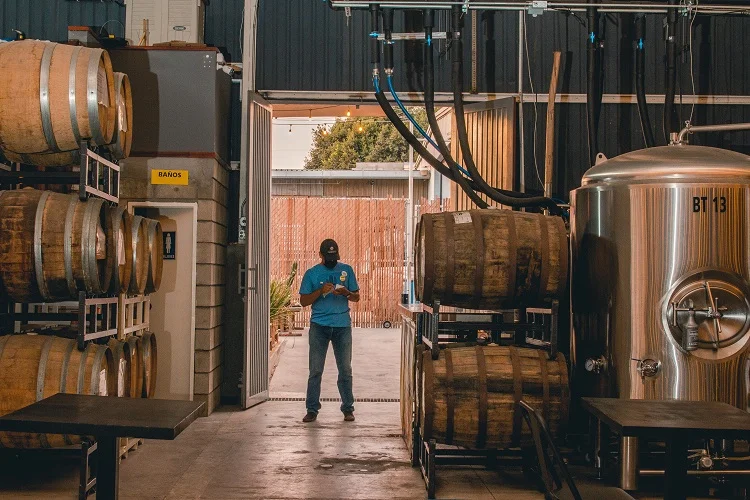
Better Beer Recipes
Installing new equipment, automatizing the brewery, and connecting everything with smooth-running software is just one side of the coin. Without an efficient production process, you won’t be able to brew real beer or increase sales. At the same time, the other side of the coin is just as important: the taste of your beer. Innovation shouldn’t come just in the form of better hardware. You should also look at your beer recipes and flavors to see how you can improve them.
Experiment, Experiment, Experiment
In the 16th century, Germany (one of the most respected beer centers) passed a regulation that stated that all beer must be made of only four ingredients: cold water, malted barley, malted wheat, and hops. Yeast was accepted as an irreplaceable part of the recipe, even though it wasn’t on the list. For a long time, beer brewers adhered to these restrictions. Their purpose was to ensure maximum consistency in beer and exclude ‘lesser ingredients’ like corn, rice, sugars, and other grains.
No such law, regulation, or guideline exists today. In fact, craft beers are famous for their one-of-a-kind flavors, daring beer ingredient combinations, and new takes on the well-known beverage. Beer consumers like to rely on their favorite flavors, but they are also looking for new beers to try and new experiences to enjoy. Such adventurous spirit when it comes to beer is what drives the craft beer industry.
To find that beer recipe that speaks to you and your customers, you need to experiment. Limited-edition batches are a good way to test your new ingredient combination and see how the community likes it. Play around with sweet additives, such as honey, chocolate, or maple, and fruit aromas like orange, apple, banana, raspberry, and others. Spices and herbs also have a place in beer, like cinnamon, ginger, vanilla, coffee, chili pepper, or nutmeg. There are no limits when it comes to experimenting with different types of brewing.
Get Into Food Science
Food science is uncovering the secrets of grain brewing that we still don’t know much about, even thousands of years after the first beers were produced. Scientists are looking at dry yeast and hops, for starters, and at how the entire brewing process works. Their goal is to allow brewers to one day select just the right amount of hops oil or just the right strain of yeast that will give them the exact flavor of beer they’re after.
Some of the recent discoveries in food science are related to hops. Different hop varieties produce oils of different potency levels. It is no longer true that the more hops you add to a brew, the more bitter it will taste. Food science is hoping to learn what type of hops gives what type of flavor so that one day you will have no problem putting together a recipe according to your tastes.
Finally, take a look at the yeast starters and yeast cells you are using. A detailed guidebook to yeast published in 2016 offers insight into what strain of Saccharomyces cerevisiae is good for baking and brewing, and what you can expect if you switch your yeast. The one you’re using right now may be good for your current needs, but it doesn’t mean it’s the best strain of yeast in general. Like with recipes, experimenting with food science can potentially unlock a world of new beer aromas that your customers will be eager to try.
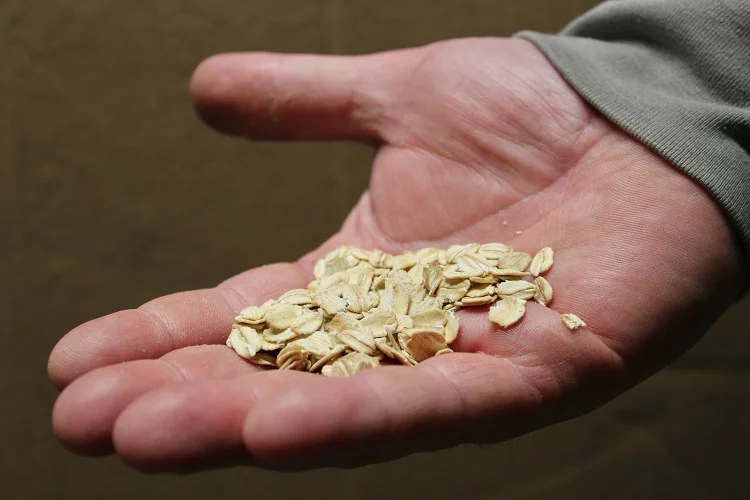
Combine Tradition and Innovation for Unmatched Beer Quality With Our Pneumatic Conveyor Systems
In the end, there is no one road to better brewing. The changes you will make in your brewery depend on your budget and what your goals are. Do you want to attract more customers? Reduce wasted product? Do you wish to expand your brewery or maybe reduce the number of workplace accidents? All of these require different approaches to the brewing process.
Take a look at your equipment and what could be improved there. Is there a step you can automate to save time and money? Would you benefit from a computer program that will provide you with invaluable information during the process?
Don’t forget to review your beer recipes and see whether you’d like to make some modifications there, too. Experiment and don’t hesitate to go where potentially no one has ever gone before. Brewing beer is all about taking a well-established tradition from the past and putting a modern twist on it that both you and your consumers will enjoy.
Ready to transform your brewing process? Get in touch with Cablevey Conveyors today and let our state-of-the-art conveyor systems elevate your brewery to the next level. Don’t wait, start your journey towards brewing perfection now!
FAQ
What Can Cablevey Conveyors Do for My Brewery?
Cablevey Conveyors manufactures advanced conveyor belt systems designed to enhance your brewing process. Our systems can help increase efficiency, consistency, and quality, ultimately improving the flavor of your beer.
How Can I Improve My Beer Recipes?
Experimentation is key. Review your current recipes, and don’t be afraid to make modifications. Brewing beer is about blending tradition with innovation. Try different ingredients, brewing methods, and aging processes to create a unique taste that you and your consumers will love.
How Can I Reduce Waste in My Brewery?
Implementing a high-quality conveyor system, like those from Cablevey Conveyors, can help reduce waste. Automation of certain steps can save time and money, while also reducing the chance of human error.
How Can I Ensure the Safety of My Employees in the Brewery?
The safety of your employees can be greatly improved by using advanced equipment that minimizes manual labor and prevents workplace accidents. Cablevey Conveyors offers solutions designed with safety in mind.
Can Cablevey Conveyors Help Me Expand My Brewery?
Yes, we offer scalable solutions that can grow with your business. Whether you’re just starting out or looking to expand with a conveyor belt for a warehouse, Cablevey Conveyors can provide the support and equipment necessary for your brewery’s growth.
How Can I Get in Touch With Cablevey Conveyors?
You can contact us through our website or by phone. We’re ready to assist you in your journey towards brewing perfection!

